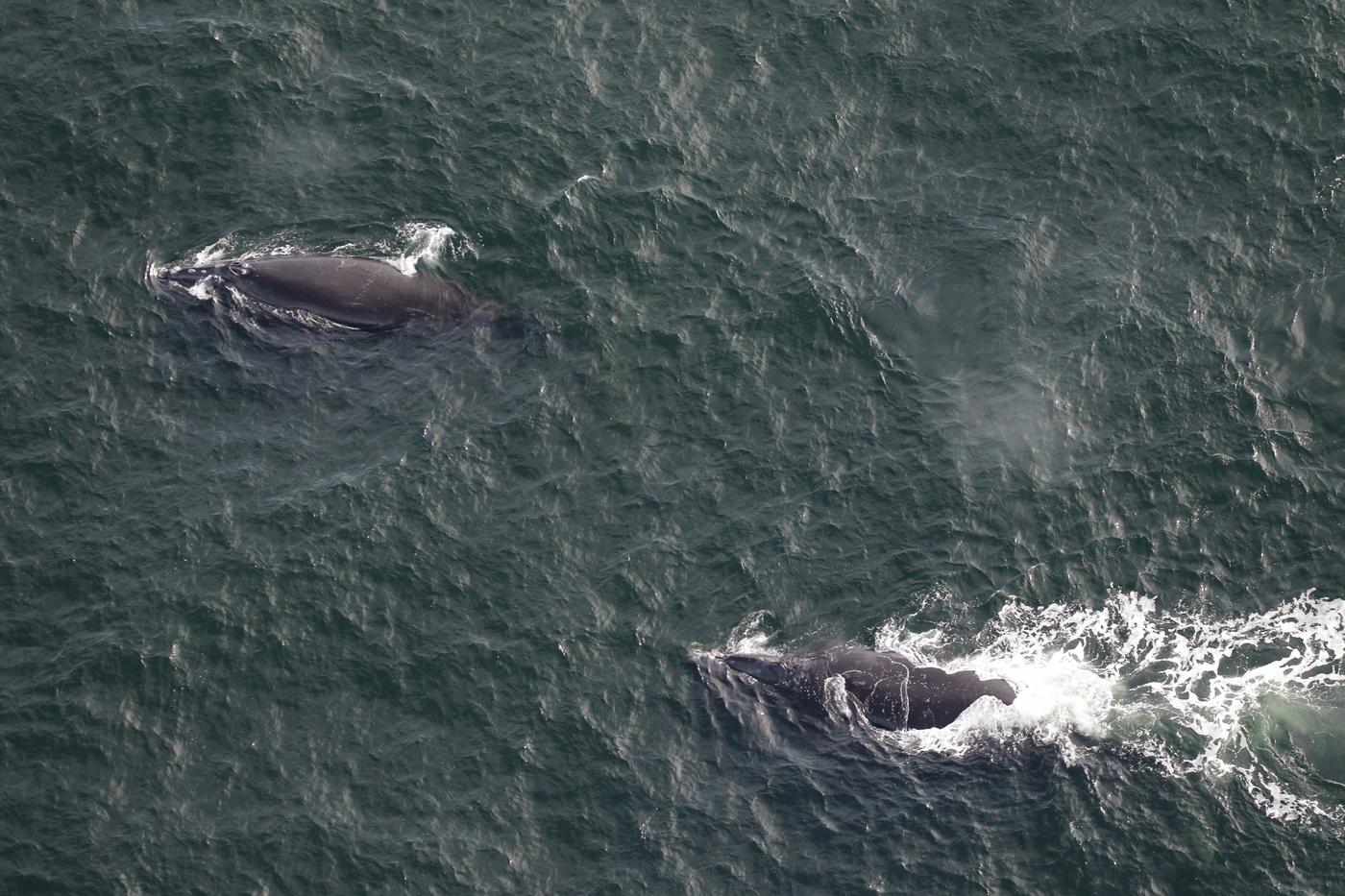

North Atlantic Right Whales Return to Georgia
December 15, 2018
Update - 1/28/2019: It turns out that Boomerang (#2503) was pregnant! She was seen with a calf on January 25, 2019 about 36 miles off Jekyll Island, Georgia. This is her fourth known calf. Our post, Fourth Calf of 2018-2019 Season Sighted Off Georgia, has more information and a picture of Boomerang and her calf.

North Atlantic right whales Magnet #3808, top left, and Boomerang (#2503), bottom right, travel together about 20 miles southeast of Tybee Island, GA on December 12, 2018.
credit: Sea to Shore Alliance, NOAA permit #20556-01
Two North Atlantic right whales were seen traveling together about 20 miles southeast of Tybee Island off the coast of Georgia on December 12th, marking their return to the area for the winter. It's particularly exciting because both of the whales are females that could be pregnant. One of the whales, Magnet (#3808), is 10 years old and has never given birth before (right whales usually start calving at about 10). The last time she was seen in Georgia waters was in 2012 as a 4-year-old. The other whale seen with her, Boomerang (#2503) is 23, has had at least three calves and last gave birth in 2014. Her most recent sighting listed in the New England Aquarium North Atlantic Right Whale Catalog was in the fall of 2017 in the Gulf of St. Lawrence - the year that 12 of her fellow right whales never made it out of the Gulf of St. Lawrence after being killed at the hands of humans. We are very happy to see these two whales alive and well and have high hopes that they are pregnant and can add to their population - which is dangerously low at only around 408 with only about 100 females of breeding age in the population.
Clay George of the Georgia Department of Natural Resources (DNR), 'noted that the tiny population is precariously short on females because of the stress of pregnancy and the long migration from New England summer feeding grounds to the Southeastern winter calving grounds. There are only about 150 females in the population, he said.' Researchers began surveys in Florida the first week of December and now the Georgia DNR and Sea to Shore Alliance are conducting surveys off the coast of Georgia. Also, the Savannah Morning News reports, "New this year is an underwater surveillance system listening for whales around Cape Hatteras [North Carolina]. The Woods Hole Oceanographic Institute, the U.S. Navy and NOAA deployed autonomous underwater gliders equipped with hydrophones to listen for right whales calling to each other and give the survey team a heads up about their migratory progress." The presence of right whales further north could mean more aerial surveys - and hopefully increased protections - in those areas.
Source:
Right whales return to Tybee Island; now the wait begins for babies - Savannah Morning News